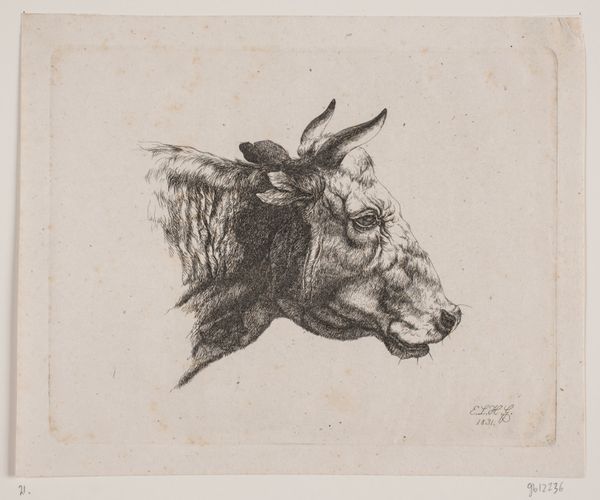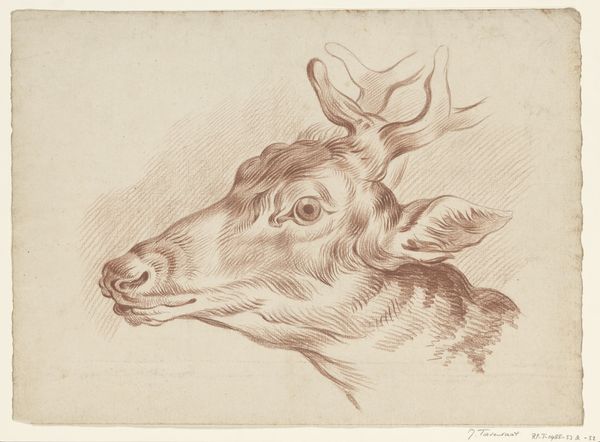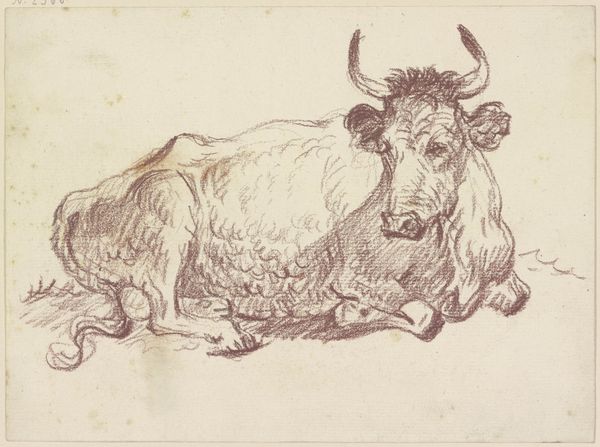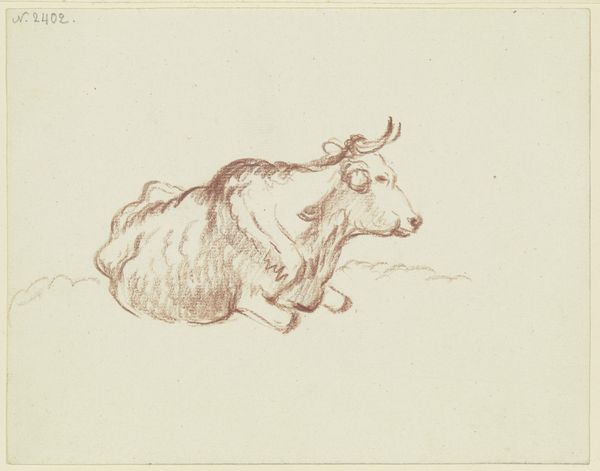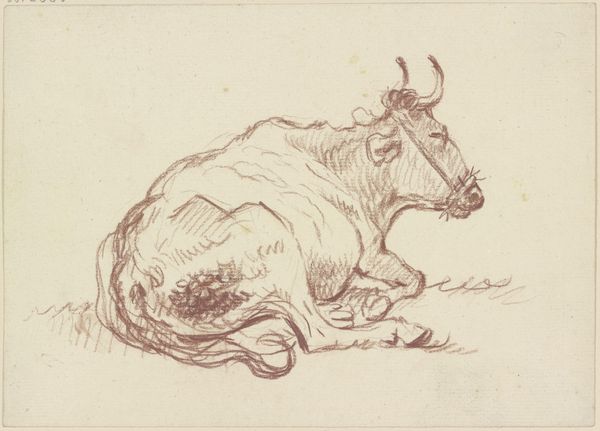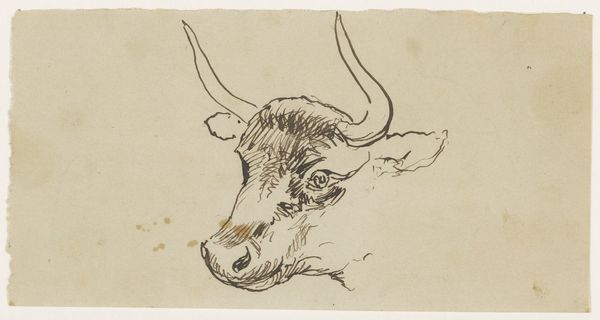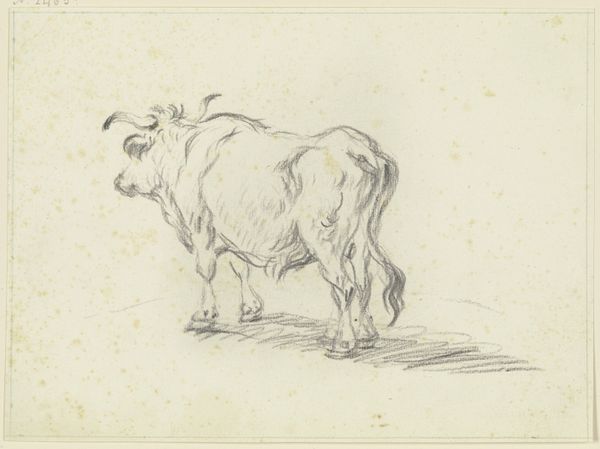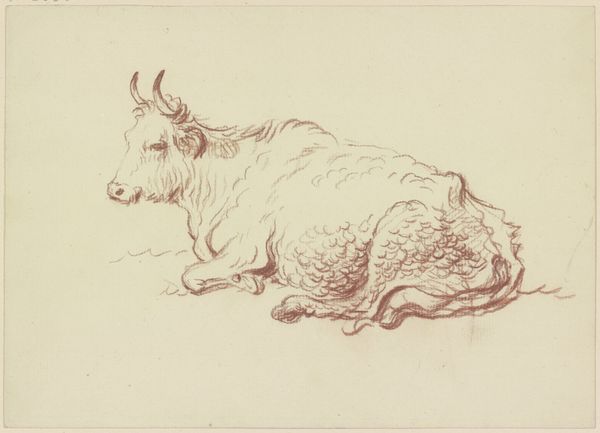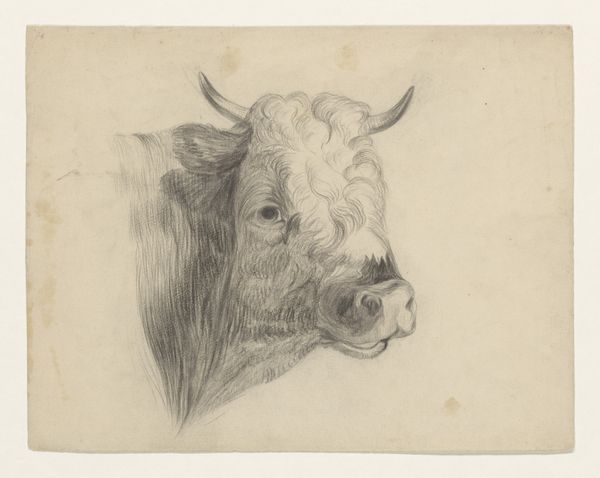
drawing, pencil
#
pencil drawn
#
drawing
#
pencil sketch
#
pencil
#
pencil work
#
realism
Dimensions: height 241 mm, width 287 mm
Copyright: Rijks Museum: Open Domain
Curator: Welcome. Here we have a striking pencil drawing, "Kop van een rund, naar rechts"—Head of a Cow, Facing Right— attributed to Dirk Arnoldus Tavenraat, dating from somewhere between 1855 and 1930. What are your first thoughts? Editor: There’s a melancholy weight to its gaze. And despite the simplicity of the medium—just pencil on paper— it feels monumental, even a little confrontational, though rendered with such gentle shading. The starkness, for me, makes it difficult to look away from the socio-economic implications it implies. Curator: Absolutely. The animal as a symbol of agricultural society carries such cultural weight, especially within Dutch history. The meticulous detail, particularly around the eye and the musculature, imbues it with a lifelike presence. For me, the curling horns suggest an ancient vestige. Editor: That's fascinating. You mention 'ancient' but for me, its simplicity highlights issues of animal labour and treatment. The gaze of this animal suggests years of service, the kind which ultimately enabled the expansion and wealth generation that fed imperial Europe and specifically nations like The Netherlands, in a long trajectory. We are left questioning the exchange between work, power, and being. Curator: Yes, and note also how the light catches the curve of the horn. Throughout centuries in both practical farming and also mythology, the horn itself is seen as an attribute of virility and dominance. Its symbolism could connect it, and the animal, with ancient Greek or Roman traditions as sacrifices or emblems. It shows continuity through images and, equally, adaptation, or evolution, over time. Editor: The realist style has to be underscored because, ultimately, in presenting the cow “as is,” Tavenraat evokes broader tensions regarding land usage, the politics of food, and human and animal interaction—aspects which cannot be dismissed in any discussion about realism because of how social this style often turns out to be, inadvertently or otherwise. Even here. Curator: So true. In the lines, shadows, and texture created by the simple tool of a pencil we can also imagine all these narratives from the cow's reality: its labour, treatment, and even exploitation, within larger cycles of consumption and use. And the enduring legacy this implies. Editor: Precisely. The work, for me, ends up offering a very subtle, but crucial visual comment on the intersection of our present, and these agricultural pasts, as sites for continued critical interrogation. Thank you! Curator: Thank you. An interesting dialogue!
Comments
No comments
Be the first to comment and join the conversation on the ultimate creative platform.



